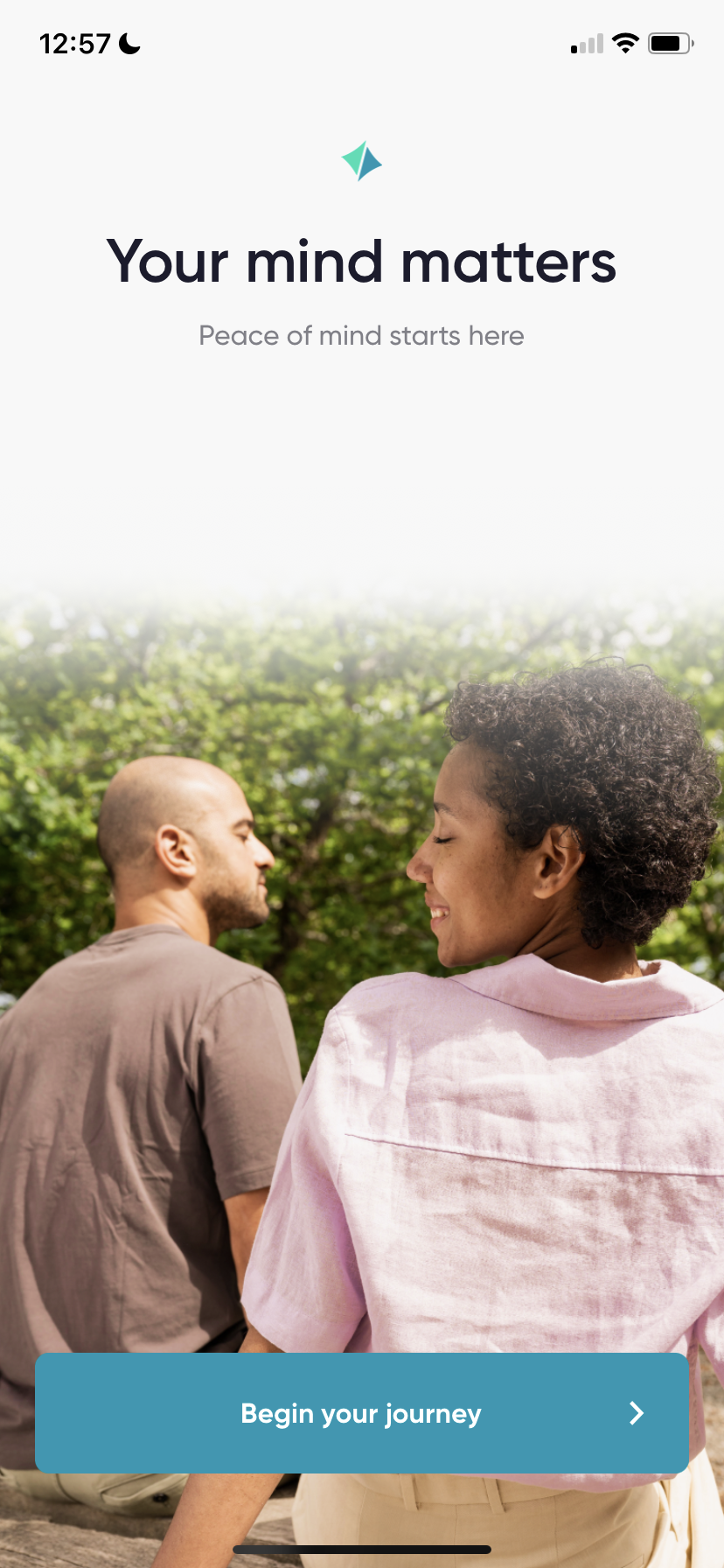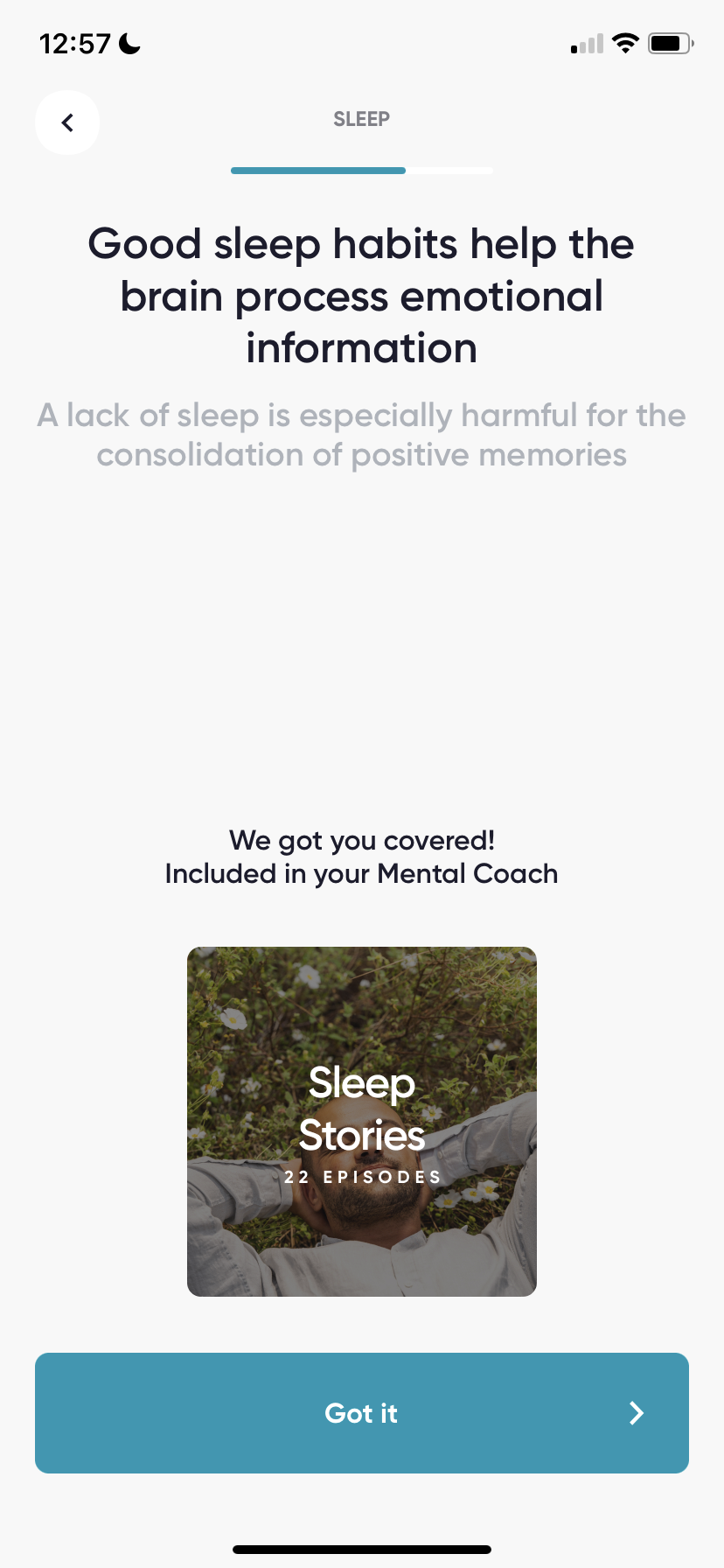employee mental health
The reason I was hired on was to create content for mental health and wellness.
Our Mental Health project started as a “pure” meditation app, consisting of a library of mindfulness content for the general public that my coworker and I produced.
However, given our prior experience working in the field of meditation, my content coworker and I knew how saturated of a market it was, and that we needed to really stand out in order to avoid being just “another meditation app”. The team was already discussing morphing the concept into a B2B offering, so my content coworker and I collaborated on a vision, from scratch, for the new app and brand. Enter: Mental Coach.
In addition to contributing to the brand strategy, my role was primarily UX writer, copywriter, and content producer 🎙️
See the below screenshots for some examples of my copy work featured on the app.
the content strategy
One of the main difficulties of working in the field of health & wellness is that change is hard. Unlike selling a portrait photography session, where the results from your time and effort are clear (show up in a pretty dress or suit, pay some money, and you’ll get nice pictures of yourself), selling mental health education and coaching is fuzzy. People say things like, “How do I know you’re the expert? How long will it take me to achieve results? Nothing is changing, and I’m not feeling any better - is this not working?”
It takes time and effort to achieve goals, to break habits and build new ones, and to develop more skillful ways of thinking and being in the world. It’s an up-and-down and up-again process that can be draining and stir up lots of doubts. Although the idea of transformation is sexy and exciting, the actual nitty-gritty of what it takes tends to repulse the human mind, which likes clear-cut answers and quick fixes.
So our challenge - the challenge of any creator in the wellness field - was this: how do we help people change in a way that inspires them to WANT TO endure the inevitable ups and downs?
We didn’t want to claim to have all the answers that would provide people with that quick fix they’re looking for. But we didn’t want to “baby” users either: make things SO accessible and easy that they’ll enroll and stick with it, but not achieve much.
We needed to instead write compelling, honest copy and content that not only inspired people to WANT to develop a daily meditation habit, stop yelling at their kids, or breathe deeply more often, but also to WANT to put forth the effort it takes to get there.
Not an easy task, but one we succeeded at with our à la carte content (more like a traditional library with six different categories of content) and signature courses (7-15 episode series which built upon one another and emphasized active participation via guided reflections and daily action steps facilitated by push notifications).



